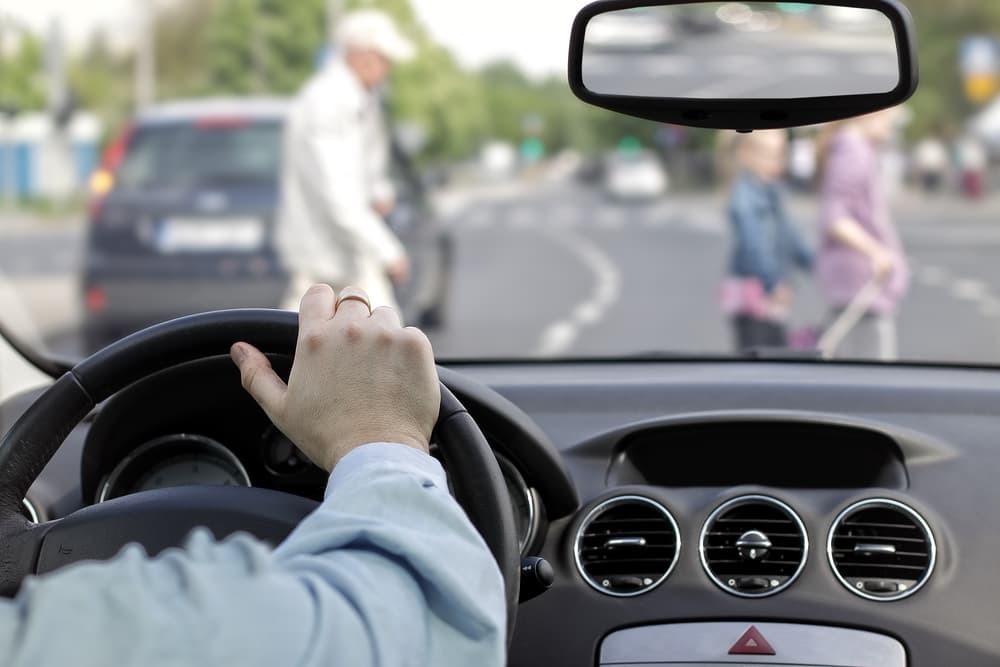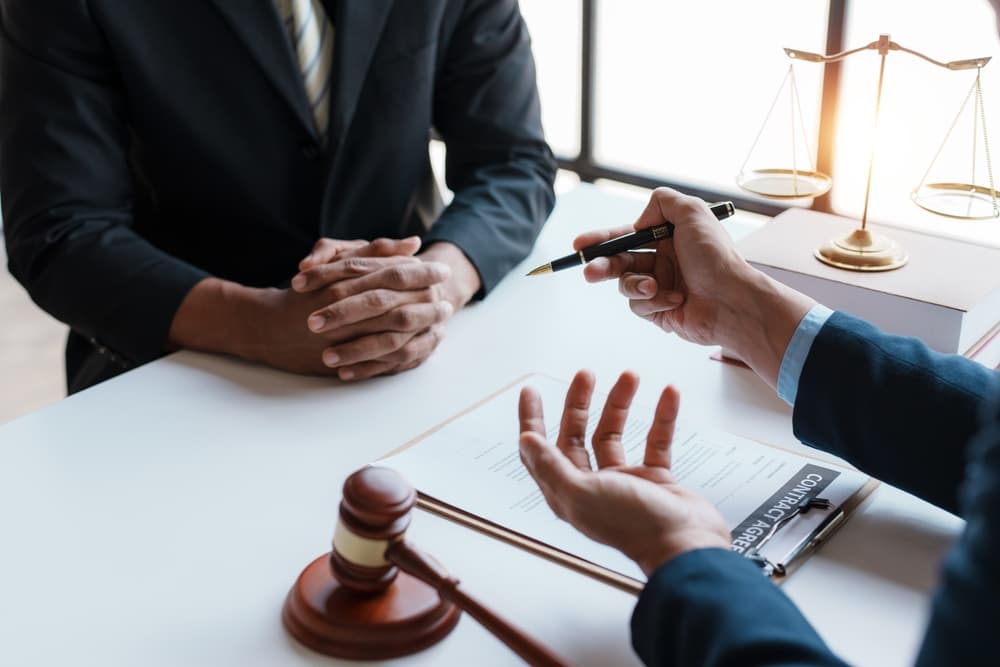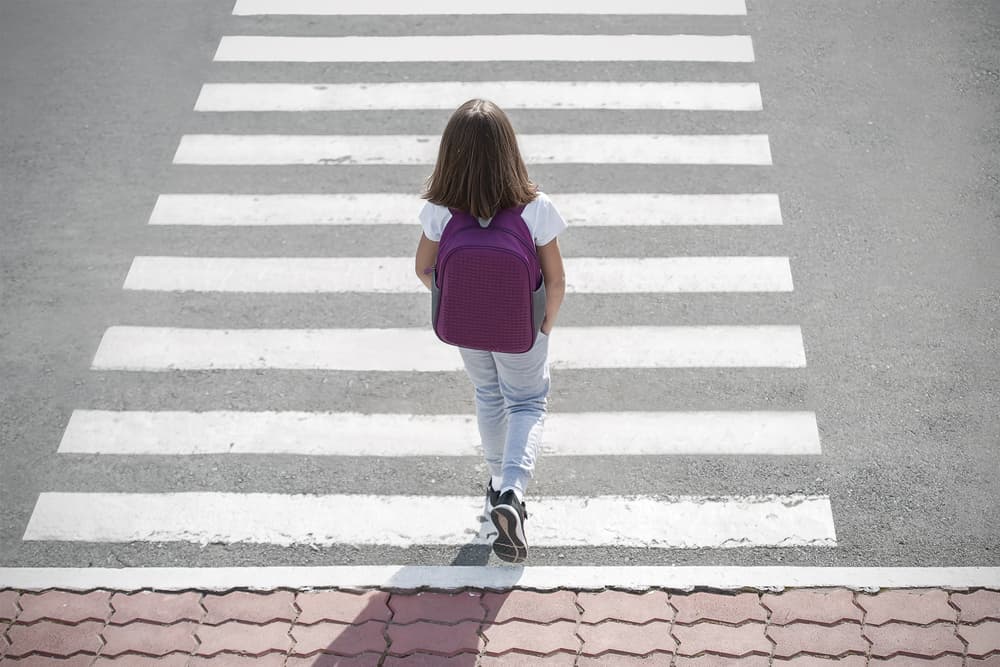When drivers fail to drive safely – especially near traffic-intersection crosswalks – dangerous and deadly passenger accidents can result. Since pedestrians don’t have an outer shell surrounding them during an accident, they are prone to suffering debilitating injuries.
The amount of time it takes to resolve a pedestrian accident case via settlement will depend upon the accident circumstance, the severity of the injuries, the insurance company (or court) involved, and whether litigation becomes necessary in the case.
If you or someone you love suffered injuries while walking, an experienced Edmonton pedestrian accident lawyer can be an invaluable help. Your lawyer can promptly investigate the circumstances surrounding your pedestrian accident and work efficiently to secure the settlement (or litigation) compensation you deserve for your losses.
Factors that Affect the Length of a Pedestrian Accident Case

Several factors can influence the amount of time it takes to settle a pedestrian accident case. Here are some key factors to consider:
- Severity of Injuries – Cases involving severe injuries typically take longer to settle because it may take time for the full extent of the injuries to become known. Extensive medical treatment, rehabilitation, and ongoing care may be required, which can prolong the settlement process.
- Disputed Liability – If there is a dispute over who was at fault for the pedestrian accident, the settlement process may be delayed while evidence is gathered and liability is determined. This can involve investigations, witness statements, and expert opinions to establish fault.
- Insurance Coverage – The amount of insurance coverage available to compensate the pedestrian and the driver involved in the accident can also affect the settlement timeline. If the at-fault driver’s insurance policy limits are insufficient to cover the pedestrian’s damages, negotiations may take longer as other sources of compensation are explored.
- Complexity of the Case – Cases involving multiple parties, complex legal issues, or disputed facts may also take longer to settle. This can include accidents involving multiple vehicles, pedestrians, or third parties, such as government entities responsible for road maintenance.
- Settlement Negotiations – The negotiation process between the injured pedestrian’s legal representative and the insurance company or legal team representing the at-fault driver can also affect the settlement timeline. Negotiations may involve back-and-forth discussions, counteroffers, and settlement conferences before an agreement is reached.
- Preparation of Evidence – Gathering and preparing evidence to support the pedestrian’s claim, such as medical records, accident reports, witness statements, and expert opinions, can take time. Thorough documentation and presentation of evidence are essential for building a strong case and securing fair compensation.
- Statute of Limitations – The statute of limitations sets a deadline for filing a lawsuit after a pedestrian accident. If the deadline is approaching, it may expedite settlement negotiations as both parties seek to avoid litigation. However, if negotiations fail to produce a satisfactory settlement, filing a lawsuit may be necessary to preserve the pedestrian’s legal rights.
- Court Backlog – If the pedestrian accident case proceeds to litigation, court schedules and backlogs can affect the timeline for resolution. Delays in court proceedings, scheduling conflicts, and other administrative factors may prolong the litigation process.
Considering these factors can help pedestrians and their legal representatives understand the potential timeline for settling a pedestrian accident case and plan accordingly for a fair and timely resolution.
Deciding Between Settlement or Litigation in a Pedestrian Accident Case

Deciding whether to settle or litigate a pedestrian accident case is a significant decision that requires careful consideration of various factors. Here are some key points to help guide this decision-making process:
- Strength of the Case – Assess the strength of the pedestrian accident case, including evidence of liability, the severity of injuries, and the extent of damages suffered. A strong case may increase the likelihood of obtaining a favourable settlement without the need for litigation.
- Insurance Coverage – Consider the amount of insurance coverage available to compensate for the pedestrian’s injuries and damages. If the at-fault driver’s insurance policy limits are sufficient to cover the pedestrian’s losses, settling may be a viable option.
- Time and Cost – Evaluate the time and cost associated with settling versus litigating the pedestrian accident case. Settlement negotiations typically resolve cases more quickly and with lower legal fees compared to litigation, which can be lengthy and costly.
- Emotional Toll – Consider the emotional toll of litigation on the pedestrian and their family. Litigation can be stressful, time-consuming, and emotionally draining, especially if the case goes to trial. Settlement offers a more straightforward resolution with less emotional strain.
- Certainty of Outcome – Assess the certainty of the outcome in settlement negotiations versus litigation. Settlements provide certainty in the amount of compensation received, whereas litigation involves inherent uncertainties, such as jury verdicts or appeals.
- Desired Outcome – Determine the desired outcome of the pedestrian accident case. Settlements allow for more control over the terms of the agreement and may result in a faster resolution. Litigation, on the other hand, may be necessary to achieve justice and hold negligent parties fully accountable.
- Legal Representation – Seek guidance from an experienced pedestrian accident lawyer to evaluate the pros and cons of settling versus litigating the pedestrian accident case. A knowledgeable lawyer can provide valuable insight into the strengths and weaknesses of the case and help determine the best course of action.
Ultimately, the decision to settle or litigate a pedestrian accident case should be based upon careful consideration of the victim’s specific circumstances and goals. By weighing these factors and consulting an experienced pedestrian accident lawyer, injured pedestrians can make an informed decision that serves their best interests and maximizes their total compensation award.
Frequent Injuries in Pedestrian Accidents
Pedestrian accidents resulting from someone else’s negligence can lead to a variety of injuries, some of which are more common than others. Here are the most frequent injuries seen in pedestrian accidents:
- Soft Tissue Injuries – These include bruises, sprains, strains, and minor cuts or abrasions. Soft tissue injuries are common in pedestrian accidents due to the force of impact from a vehicle or a fall onto the pavement.
- Fractures – Pedestrians may also suffer fractures or broken bones in accidents, particularly in the arms, legs, wrists, ankles, or hips. The impact of a collision with a vehicle can cause bones to break, leading to pain, swelling, and limited mobility.
- Head Injuries – Head injuries are another significant concern in pedestrian accidents, as the accident victim’s head is vulnerable to impact on the vehicle or pavement. Common head injuries include concussions, traumatic brain injuries (TBIs), and skull fractures, which can have serious long-term consequences.
- Spinal Cord Injuries – Pedestrians may sustain spinal cord injuries if the force of the accident damages the spinal cord or vertebrae. These injuries can result in partial or complete paralysis, loss of sensation, and other debilitating effects.
- Internal Injuries – Internal injuries may occur in pedestrian accidents, such as damage to organs or internal bleeding. These injuries may not be immediately apparent but can be life-threatening if left untreated.
- Lacerations and Abrasions – Pedestrians may suffer cuts, lacerations, or road rash from contact with the vehicle, pavement, or surrounding objects. These injuries can range from minor scratches to deep wounds requiring stitches, surgeries, or other medical attention.
- Emotional Trauma – Pedestrian accidents can cause significant emotional trauma, including post-traumatic stress disorder (PTSD), anxiety, depression, and other mental health issues.
- Amputations – In severe pedestrian accidents, limbs may be crushed or severed, resulting in traumatic amputations. Losing a limb can also have significant emotional and psychological effects on the victim’s life.
- Fatal Injuries – Unfortunately, pedestrian accidents can also result in fatalities. Pedestrians are particularly vulnerable to the force of a collision with a vehicle since they do not have an outer shell or covering that surrounds them in an accident situation.
How do Pedestrian Accidents Happen and Where Do They Most Frequently Occur?

Pedestrian accidents stemming from driver negligence often arise from various factors, including inattention or disregard for traffic rules. Among the leading causes is failure to yield at intersections, where drivers may overlook pedestrians crossing the street – either because of distraction or haste. Similarly, at crosswalks, drivers may ignore signals indicating pedestrian right-of-way, leading to potentially dangerous collisions.
Parking lots also present significant risks, as drivers focused on securing spots or exiting quickly may neglect pedestrians who are walking in between vehicles. Children and elderly individuals are particularly vulnerable in these areas.
Another prevalent scenario unfolds at intersections where right turns occur. Drivers who are preoccupied with checking for oncoming traffic may overlook pedestrians in crosswalks, especially when making quick turns. This oversight can result in pedestrian collisions, often with fatal consequences.
Residential areas are also dangerous, particularly when drivers speed excessively. Whenever a driver speeds, they may not have time to react if a child suddenly appears in their path. Moreover, poorly lit streets and areas with inadequate signage increase these risks – especially at night. In such conditions, drivers may struggle to spot pedestrians, further increasing the likelihood of accidents.
If you suffered injuries in a pedestrian accident that occurred in one of these locations, an experienced pedestrian accident lawyer can help. Your lawyer can first obtain a copy of the police report and investigate the circumstances of your accident. They can then pursue a personal injury claim with the appropriate insurance company on your behalf.
Compensable Monetary Damages Following a Pedestrian Accident
In a pedestrian accident claim or lawsuit, various types of monetary damages may be awarded to compensate the injured pedestrian for their losses. Some of the most common types of monetary damages in a pedestrian accident claim or lawsuit include:
- Lost Income – Pedestrians who cannot work due to their injuries may receive compensation for lost income. This includes income lost during recovery, as well as any future loss of earning capacity, if the injuries prevent the pedestrian from returning to work or earning at the same level as before the accident.
- Past and Future Pain and Suffering – Compensation may be available for the physical pain, discomfort, and emotional distress experienced as a result of the pedestrian accident. This includes not only the immediate pain and suffering but also any long-term effects on the pedestrian’s quality of life and mental well-being.
- Loss of Consortium – Spouses or other family members of the injured pedestrian may be entitled to compensation for the loss of companionship, support, and services resulting from the pedestrian’s injuries. This includes the effects on the relationship and household responsibilities.
- Punitive Damages – In cases involving egregious negligence or misconduct by the at-fault party, injured pedestrians may be eligible to recover punitive damages. The main purpose of these damages is to punish at-fault drivers and prevent similar accidents from occurring in the future.
- Disability or Disfigurement – Pedestrians who suffer permanent disabilities, limitations, or disfiguring injuries (such as scars) in an accident may recover additional compensation for the effect these injuries have on their everyday lives – and on their ability to engage in activities they once enjoyed.
The amount of monetary damages in a pedestrian accident claim or lawsuit varies depending on the specific circumstances of the case, including the severity of the pedestrian’s injuries, the extent of their damages, and the jurisdiction where the case is heard. An experienced pedestrian accident lawyer can assess the value of the pedestrian’s claim and pursue maximum compensation on their behalf through negotiation or litigation.
Speak to an Experienced Pedestrian Accident Lawyer about Your Legal Matter Today
Following a pedestrian accident that results from driver negligence, injured victims typically have only two years, beginning on their accident date, to file a personal injury claim or lawsuit. Otherwise, they jeopardize their right to take legal action – and to recover the compensation they deserve for their accident-related losses.
One of the most important ways to streamline your case settlement is to retain an experienced Edmonton personal injury lawyer right away. Your lawyer can efficiently investigate your accident case, pursue a claim with the insurance company, and aggressively negotiate on your behalf for the fair settlement you deserve. If the insurance company refuses to make a fair settlement offer, your lawyer can then litigate your case to an efficient resolution in the court system.
